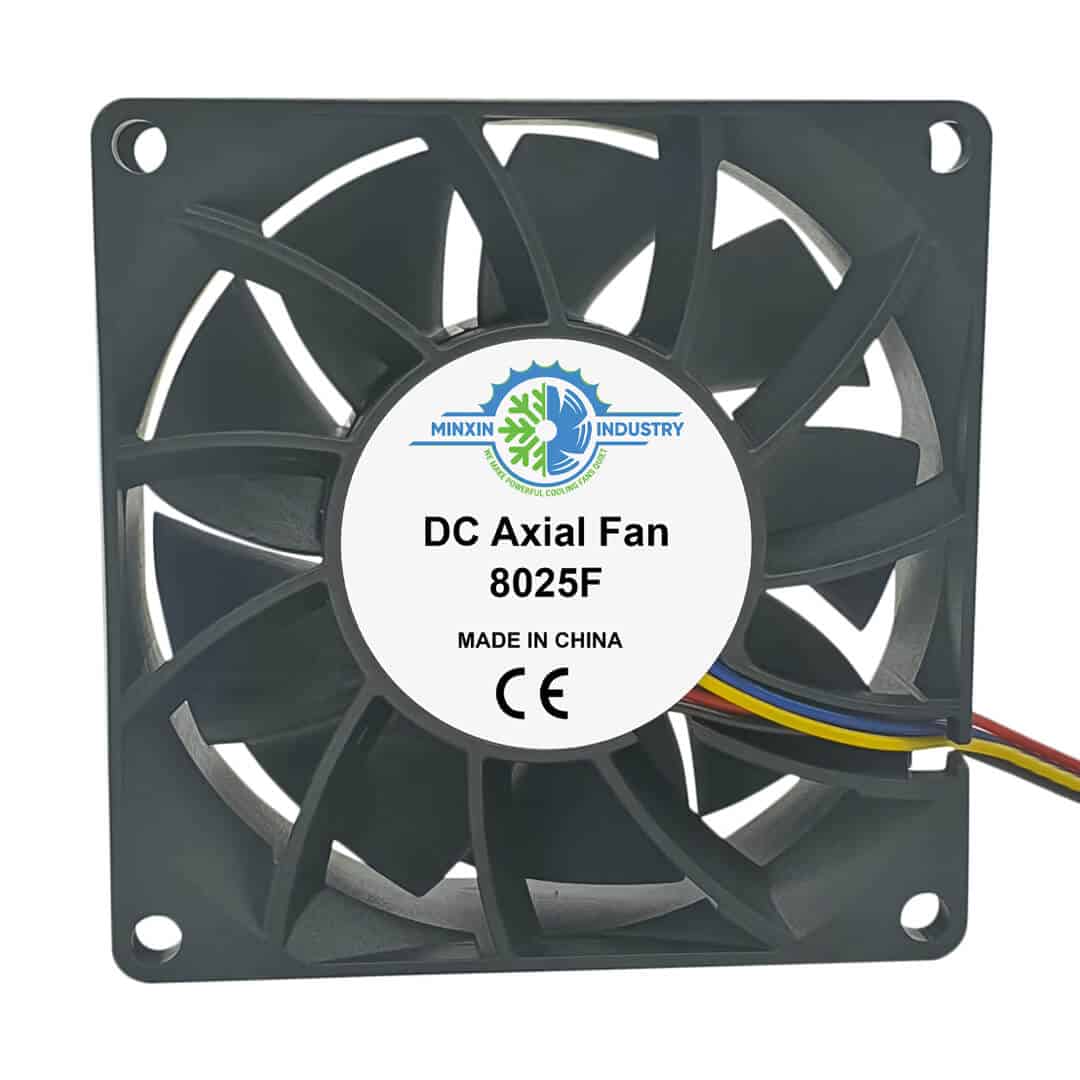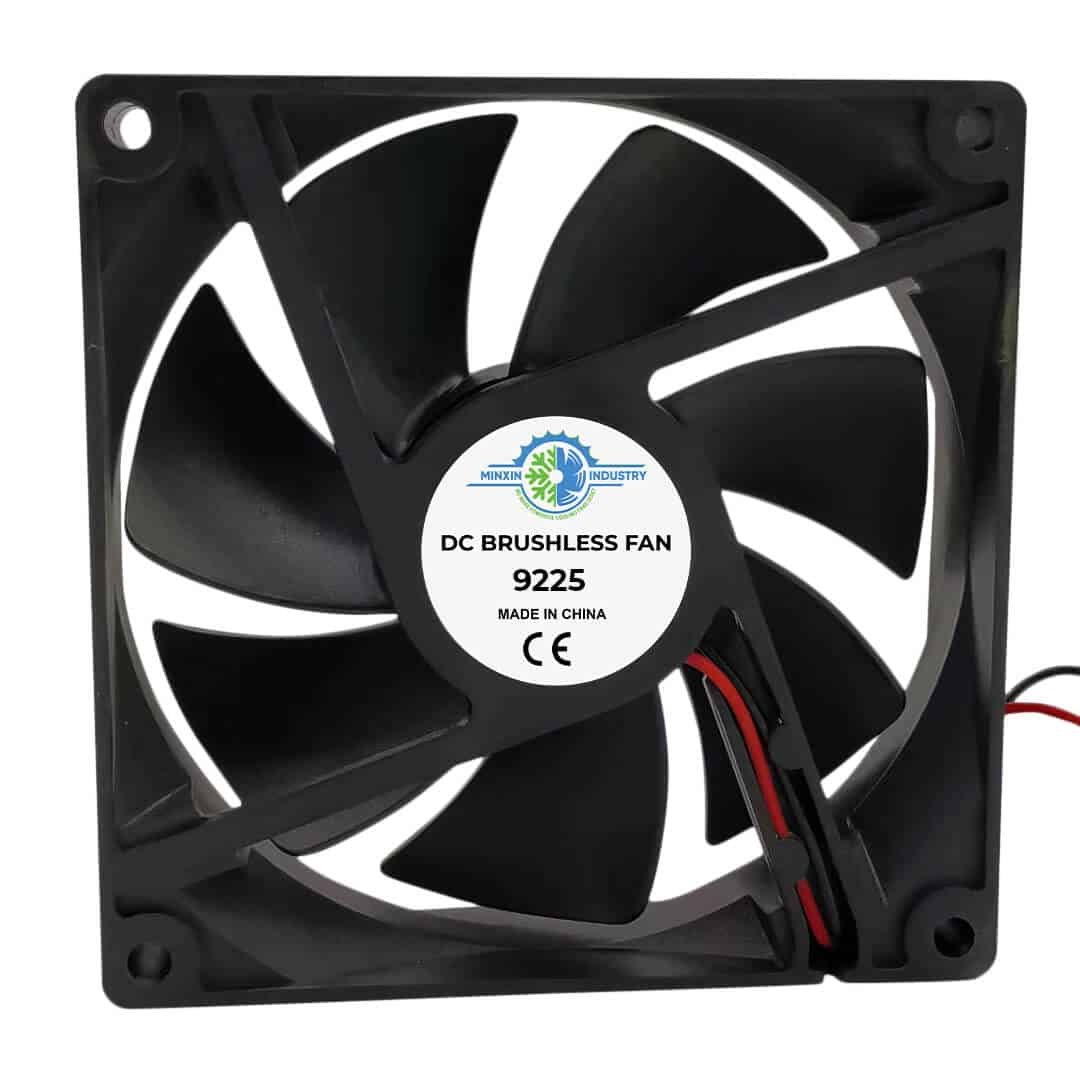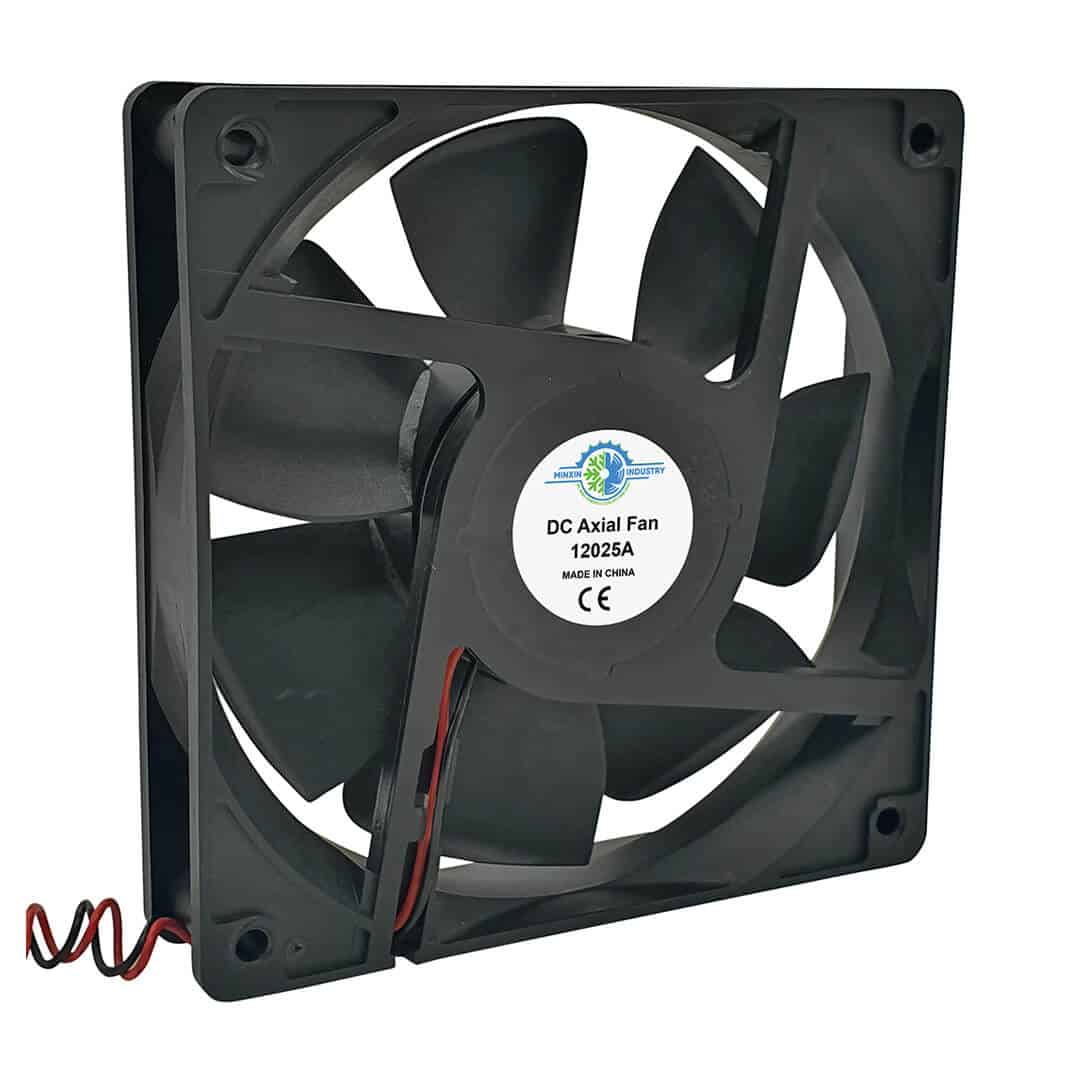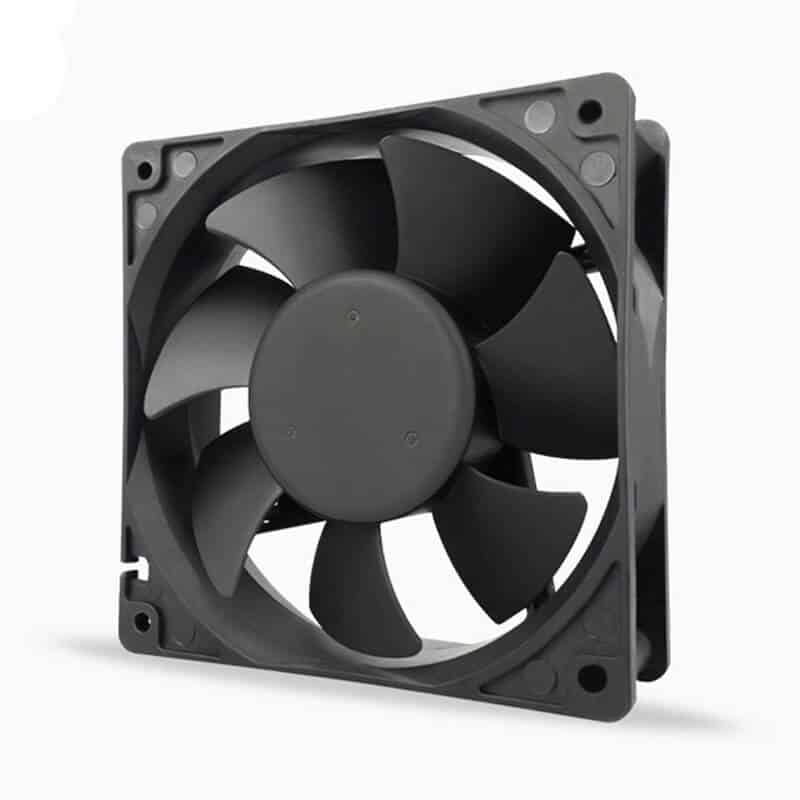Most people don’t think about the direction of airflow when it comes to their CPU fan – but it can actually make a big difference in terms of performance and other factors. This quick guide will show you how to optimize your airflow for both function and style.
Why airflow direction matters
There are two main types of CPU coolers on the market, air, and water. Each has its own benefits and drawbacks, but for most people, the air is the way to go. That’s because it’s cheaper, easier to install, and generally more reliable.
One of the most important factors in choosing a CPU air cooler is the direction of airflow. There are three main options: front-to-back, back-to-front, and top-down.
Front-to-back coolers draw air in from the front of the case and exhaust it out the back. This is the most common type of cooler and it works well in most situations.
Back-to-front coolers do the opposite, drawing air in through the back of the case and exhausting it out the front.
Top-down coolers are designed to cool the graphics card and other components that are mounted underneath the motherboard. They generally draw air in at the top of the case and exhaust it out the back.
There is also a fourth type of cooler, but it’s not really a separate category. Some cases include a built-in fan with a heat sink that is designed to cool the video card. This type of cooler is not as efficient as the other types, but it’s better than nothing.
What should we know about CPU cooling fans’ airflow?
Airflow is the movement of air through your case. The air volume is usually measured in cubic feet per minute (CFM). The direction of airflow is important to consider when building your computer. The three most common positions for CPU fans are Intake, Exhaust, and Neutral.
Intake fans draw cool air into the case from the outside. This helps to keep your components cool and prevents dust from building up inside the case. Exhaust fans compel hot air out of the case. This helps to keep your components from overheating and prevents dust from building up inside the case. Neutral fans circulate air inside the case without blowing it out or drawing it in from the outside. This can help to even out temperatures inside the case and prevent dust build-up.
When choosing a fan position, you should consider what your goals are for cooling and dust prevention. For example, if your goal is to cool a component, you should choose an intake fan. If your goal is to reduce dust buildup inside the case, you should choose an exhaust or neutral fan.
CPU Cooling fans: front to back or back to front?
When it comes to CPU cooling fans, there are two schools of thought: front to back or back to front. There are advantages and disadvantages to both ways, so it ultimately comes down to personal choice.
Static pressure fans are designed to push air through tight spaces, making them ideal for use in the front-to-back configuration. This allows the fan to push air directly over the heat sink and into the case, where it can be exhausted out the back.
However, some people prefer the back-to-front configuration for a couple of reasons. First, it allows for better airflow through the case overall. Second, if you have a windowed side panel on your case, you can show off your sparkling clean CPU cooler!
So which is the best way to go? Ultimately, it’s up to you.
What is the correct CPU fan airflow direction?
When it comes to building a PC, there are a lot of things you need to take into account. One of the most important aspects is the direction of airflow for your CPU fan.
If you’re not sure which way your CPU fan should be facing, don’t worry – you’re not alone. We’ll show you how to check the correct CPU fan airflow direction so that your PC runs at its best.
First, it’s important to understand how air flows through a computer case. Generally speaking, hot air rises while cold air sinks. That means that the ideal airflow direction for your CPU fan is up-to-down (or front-to-back).
However, there are some cases where the opposite might be true. If you have a special air cooling design, your CPU fan might be running in the opposite direction. If you’re not sure which way to face your CPU fan, check the manufacturer’s instructions or look on the inside of your PC case for an airflow diagram.
But be careful, you should understand that, you need to consider the cooling fan guard. The purpose of this guard is to protect the fan from being damaged by foreign objects. Usually, in the case of a CPU fan, it has blades that are very sharp, especially when they are in operation. If you don’t have any protection for these blades, then they might damage your hand.
But let’s say, CPU airflow and its efficient cooling really depend on GPU and case cooling fans. So we’ll talk about this matter further to get you to understand the whole process.
GPU cooling fans: up or down?
It’s a common question asked by first-time builders: which way should my GPU cooling fans face? Up or down? The answer isn’t as simple as it seems. Of course, there are several general guidelines that you can follow. But ultimately, it comes down to personal preference and your specific build.
Let’s start with the basics. Most GPU cooling fans are designed to push air in one direction: down. That’s because hot air rises, so it makes sense to have the fan push the hot air away from the GPU and out of the case.
However, there are also some GPUs that come with fans that curve upwards. This design is supposed to help direct airflow over the entire GPU, not just the area closest to the fan.
Some say that the best way to cool a graphics card is to have the fan blow air down onto the heatsink, which then blows hot air out of the case.
Others say that the best way to cool a graphics card is to have the fan blow air up into the case, which then gets pulled out by an exhaust fan.
So, which is right? Unfortunately, there’s no easy answer. It depends on a variety of factors, including your case’s airflow and how well your graphics card’s cooler is designed.
In general, though, blowing air down onto the heatsink is going to be more effective than blowing air up into the case. That’s because it’s easier for hot air to rise than it is for cold air to sink.
Case fans: what’s the best configuration?
Case fans are one of the most important components of a PC, and their configuration can make a big difference in performance. Here’s a guide to help you choose the best configuration for your case fans.
There are two main types of case fans: intake and exhaust. Intake fans bring fresh air into the case, while exhaust fans expel hot air. The ideal configuration depends on the type of PC you have.
For a gaming PC, it’s generally best to have more intake fans than exhaust fans. This helps ensure that the graphics card stays cool, as hot air can cause throttling and reduce performance.
For a workstation PC, it’s generally best to have more exhaust fans than intake fans. This helps prevent dust buildup and keeps components cool.
What cooling fans we can offer you for your CPU, GPU, and computer case?
We all know how essential it is to keep our computers cool. And one of the best ways to do that is with a cooling fan. But with so many different types of cooling fans out there, it can be hard to know which one is right for you.
-
8025F 80mm BLDC Motor CPU Cooling Fans for Sale
-
9225A High Speed BLDC 92mm Best DC Fan
-
12025A Silent Axial Cooler Fan Thinnest 120mm Fan
-
12025C Best Axial 120mm 12V PC Cooling Fan
-
12038A BLDC Axial Fan Small 120x120x38mm Mining Rig Fan
-
14025A Quiet Muffin Fan Best 140mm Radiator High Static Pressue Fan
Here at Cooling Fans, we have a wide variety of cooling fans to choose from. Whether you need a fan for your CPU, GPU, or computer case, we have you covered.
Our CPU fans are designed to create a slight vacuum, which helps suck up dust and dirt before it has a chance to build up on your components. And our GPU fans are specially designed to keep your graphics card cool, even when the action gets heated.
Plus, all of our fans come with built-in dust filters to help keep your computer clean and running smoothly.
Regarding the computer case fans, we have a wide variety of sizes and speeds to choose from, so you can get the exact look or cooling power you need. Our computer case fans are also great if you want to dress up your computer since we offer both LED and non-LED versions.
Right direction: how do we know we are doing right for CPU, GPU, or case’ fan airflow direction?
When it comes to CPU, GPU, or case fans, how do we know which direction is the right one for airflow? Fortunately, there are a few key things we can look at to help guide us in the right direction.
First, let’s take a look at the fan blades. If they’re pointing up, then that means the airflow will be directed upwards as well. This is ideal for situations where heat needs to be quickly dissipated, such as with high-performance gaming PCs.
On the other hand, if the fan blades are pointing down, then that means the airflow will be directed downwards. This is ideal for cases where there isn’t a lot of room for air to circulate and you need to maximize cooling efficiency.
Finally, you’ll also want to pay attention to how the fan is connected to the rest of the components in your system. Some fans are designed to be mounted on top of the motherboard and have a special bracket for this purpose. Others are designed to be mounted on either side of the motherboard, but they may not necessarily come with mounting brackets.
Wrong direction: what should you do if you doing wrong for CPU, GPU, or case’ fan airflow direction?
You’ve just completed a thorough cleaning of your desktop PC, inside and out. But as you admire your handiwork, you notice something: all the fans are blowing in the wrong direction. If you have a CPU, GPU, or case fan blowing the wrong way, don’t panic. You can easily fix it.
First, check to see if your fans are mounted correctly. If they’re not, simply unscrew them and reverse the direction of the blades. Once they’re mounted properly, make sure that all the intake vents on your PC are unobstructed. If they’re blocked by dust or other debris, clean them out so that air can flow freely.
Finally, take a look at your airflow setup. If you’re using an aftermarket CPU cooler, make sure it is positioned correctly for optimal airflow.
FAQs of CPU fan airflow direction guide
When it comes to ensuring your computer runs smoothly, there are a few key things to keep in mind. One of the most important is making sure your CPU fan is properly set up. Here are some FAQs to help guide you through the process:
Q: Which way should my CPU fan blow?
A: Generally, it’s best to have your fan blowing air into the case. This will help draw heat away from the components and improve airflow throughout the system.
Q: How do I control the direction of my CPU fan?
A: Some fans have reversible airflow, or you can install the CPU fan in a different direction. Check your fan’s documentation to be sure. You can also usually find this information in your motherboard manual.
Q: How can I improve the airflow of my CPU fan?
A: There are a few things you can do to improve the airflow of your CPU fan:
1. Make sure that there is no dust or dirt blocking the fan blades.
2. If possible, increase the speed of the fan.
3. Make sure that the fan is mounted securely and that there is no vibration coming from it.
Conclusion: the importance of good airflow
In order to ensure that your CPU fan is providing optimal airflow, it is important to understand the basics of how airflow direction works. By understanding the principles of how airflow direction affects cooling, you can make sure that your CPU fan is providing the best possible cooling for your system.
Airflow direction is important because it helps to determine how well heat will be dissipated from the components in your system. If air is flowing in the wrong direction, heat will build up and components will overheat. This can lead to damage or even failure of components.
Good airflow direction ensures that heat is dissipated efficiently and components are kept cool. By understanding the principles of how airflow direction affects cooling, you can make sure that your system has good airflow and optimal cooling.













